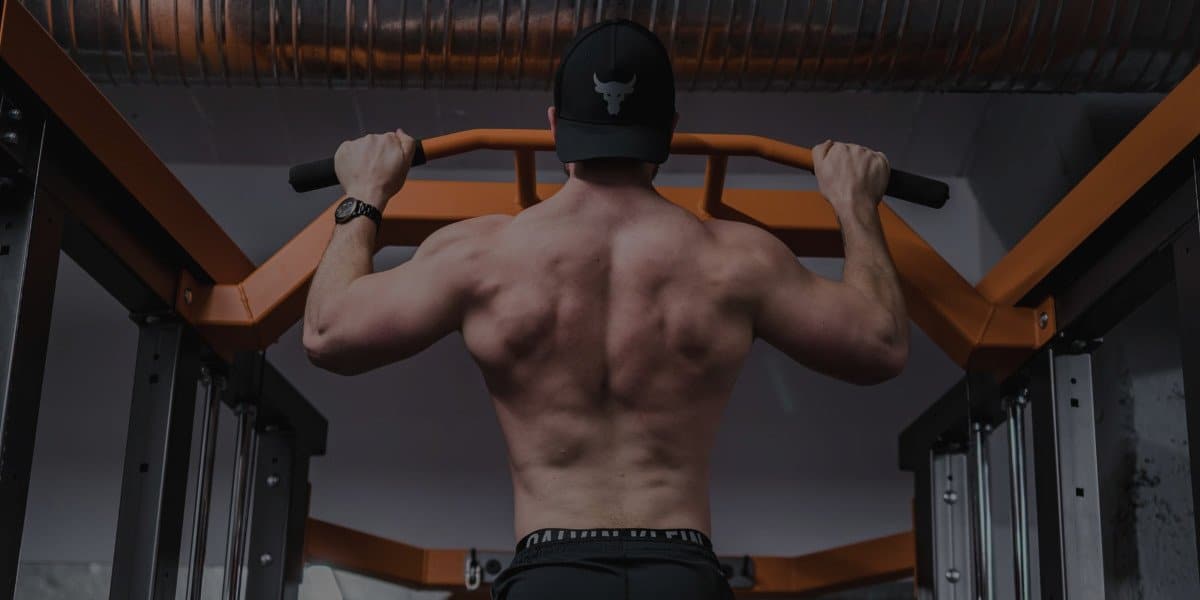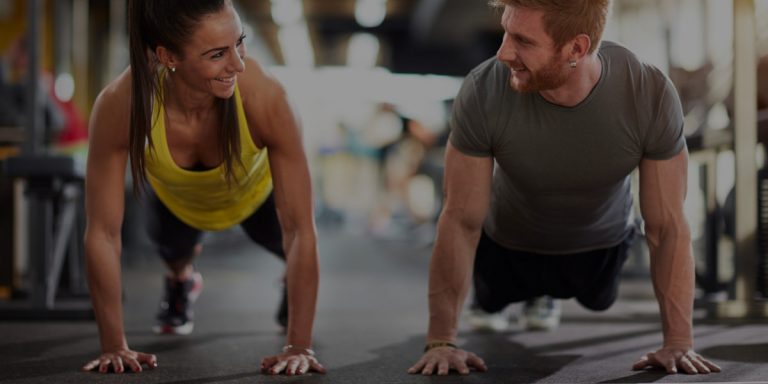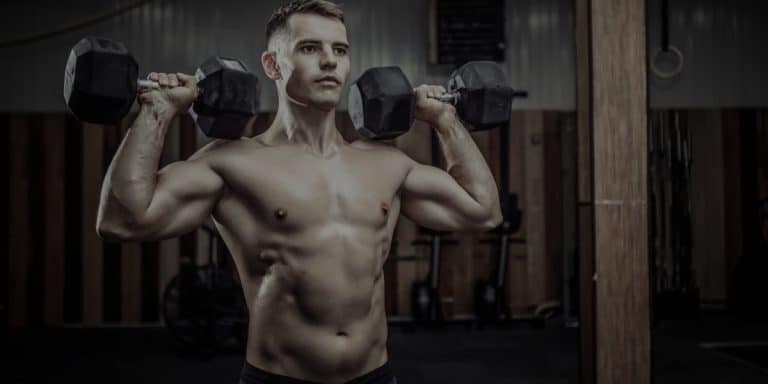Compound Shoulder Exercises
Everybody focusses on the chest. The emphasis is so much on the bench press in weightlifting circles, that chest presses take all the glory – people forever ask what you can bench, and nobody ever asks what you can overhead press.
This is unfortunate. Not only is the overhead press one of my favourite exercises (and one that will feature prominently in my list below), but the shoulders are vital to upper body strength, health and fitness. True upper body strength requires you to train your deltoids and the surrounding muscles; it requires you to be able to use them to a high standard.
There are also good aesthetic reasons for training the shoulders. Though a barrel chest may look good, the classic v-taper that many of us aim for has very little to do with it. It is all about hip to shoulder ratio, with a lot of input from the lats (the broad ‘wing’ muscles in your mid back). Wide lats and well-developed shoulders are key to an athletic physique.
However, training your shoulders is tough work. It takes a lot of stimulation and a lot of volume to grow them, and a lot of technical expertise to thrive in the types of exercises they need.
So, what to do?
Perform plenty of heavy, compound shoulder and upper back exercises, and focus on perfecting your technique.
The answer? Heavy compound shoulder exercises.
Efficient at targeting large areas like the shoulders and upper back, they are also incredibly functional in building upper body strength. Using the exercises in my list below will ensure that your full shoulder section – alongside your upper back, upper pecs and, importantly, your triceps – will receive sufficient stimulus for adaptation.
The Shoulder Muscles (And What They Do)
When we talk about the shoulders, we’re actually talking about a fairly complex arrangement of muscles, especially in terms of exercise performance.
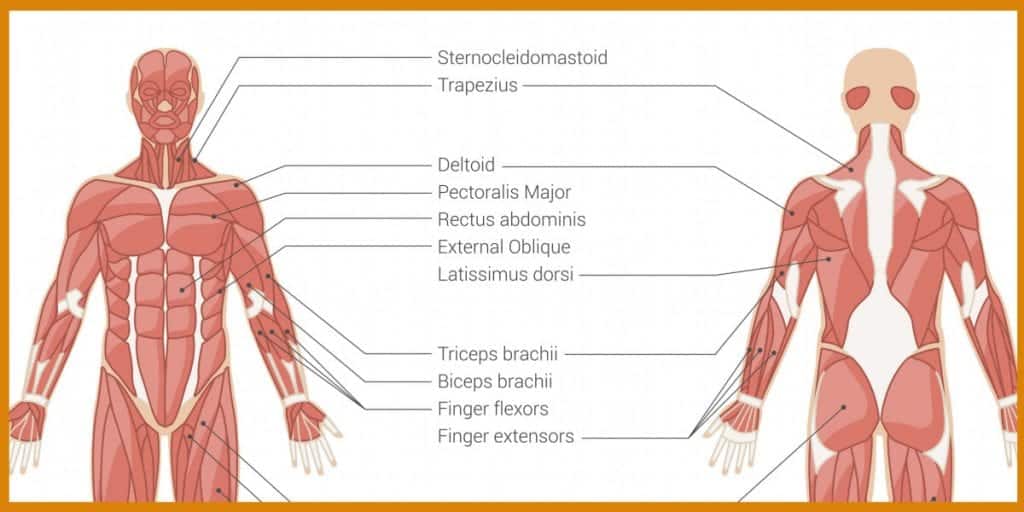
Primarily, we’re looking at the eight muscles that attach to the scapula, humerus, and clavicle. These form the main shape of the shoulders and underarm. They also do a lot of the work associated with shoulders, enabling a wide range of motion, and protecting and maintaining the main shoulder joint – the glenohumeral joint.
Of these, the deltoid is king. It is a large triangle of muscle that caps the shoulder, giving the classic ‘boulder shoulder’ look. It is the most aesthetically noticeable portion of the shoulder itself.
The deltoid runs over the top of the shoulder from the clavicle in the front, to the scapula in the back, before stretching down to near the centre of the humerus bone.
We talk about the deltoid as three separate portions – the anterior (front), medial (middle), and posterior (rear) deltoids. Each portion is responsible for different actions, though all work together to raise the arms, to assist the pectoralis muscle in the chest.
Four muscles—the supraspinatus, infraspinatus, teres minor, and subscapularis—make up the rotator cuff. This is the main section that stabilizes the shoulder, holds the head of the humerus in place, and prevents joint dislocation under load or trauma.
In training the shoulders, we are also looking at the traps, that run along the upper back, the rhomboids, which sit across the mid-upper back, and the upper portions of the latissimus dorsi, mentioned above. Also included will be the upper portion of the pectorals, the main chest muscles, and the triceps brachii of the upper arms, which are responsible for straightening the arms.
Our Three Top Shoulder Compound Exercises
So, how do we make sure that all of these disparate muscles are used in training, under sufficient load to elicit adaptation?
Easily. As above, large compound movements.
All three of these exercises will combine to work every aspect of your shoulders, alongside your triceps, upper chest and upper back, eliciting a great deal of growth. No single exercise will work all portions, so be sure to include all three and some variations of each.
Overhead Press
Overhead presses occupy the same space in shoulder training as squats do in leg training and chest presses do in chest training – they are the best of the best for strength and hypertrophy. They will work your deltoids and triceps incredibly hard, will rely on a strong upper back and core for stability, and full, barbell overhead presses will rely on a good breath and brace and leg stability.
To perform a barbell overhead press:
- Rack a barbell at shoulder height with your hands slightly outside of shoulder width apart.
- Grip the bar with both hands. Retract your scapula, take a deep breath, brace and activate your core and lats.
- Move under the bar, bringing it into a front rack position.
- Take two steps back, bringing your feet level with one another at hip width distance. Squeeze your glutes hard. Bring your head back, giving yourself a double chin.
- Press the barbell upwards, aiming to bring it to the back of your head, as you move your face forwards. Think of it like opening a window and sticking your head out.
- Return to the beginning. This is one rep.
You can also use dumbbells for your overhead press, giving you a slightly easier technique to master and more unilateral work. You can also go for seated military presses, with either dumbbell or barbell, isolating your upper body from your legs and core.
Incline Bench Press

An incline variation will place more emphasis into the anterior deltoids and upper pecs, whilst still working the triceps very intensively.
To perform an incline bench press:
- Lie on an incline bench, underneath the racked barbell, with the barbell around your clavicle. The steeper the incline, the more emphasis will be placed in the deltoids.
- Breathe, brace, and tense your lats, then unrack the barbell with your hands just outside of shoulder-width apart, keeping everything tight.
- Lower the barbell down to your lower chest, keeping your elbows tucked at 45 degrees from your body.
- Press back to the top. This is one rep.
Pull Ups
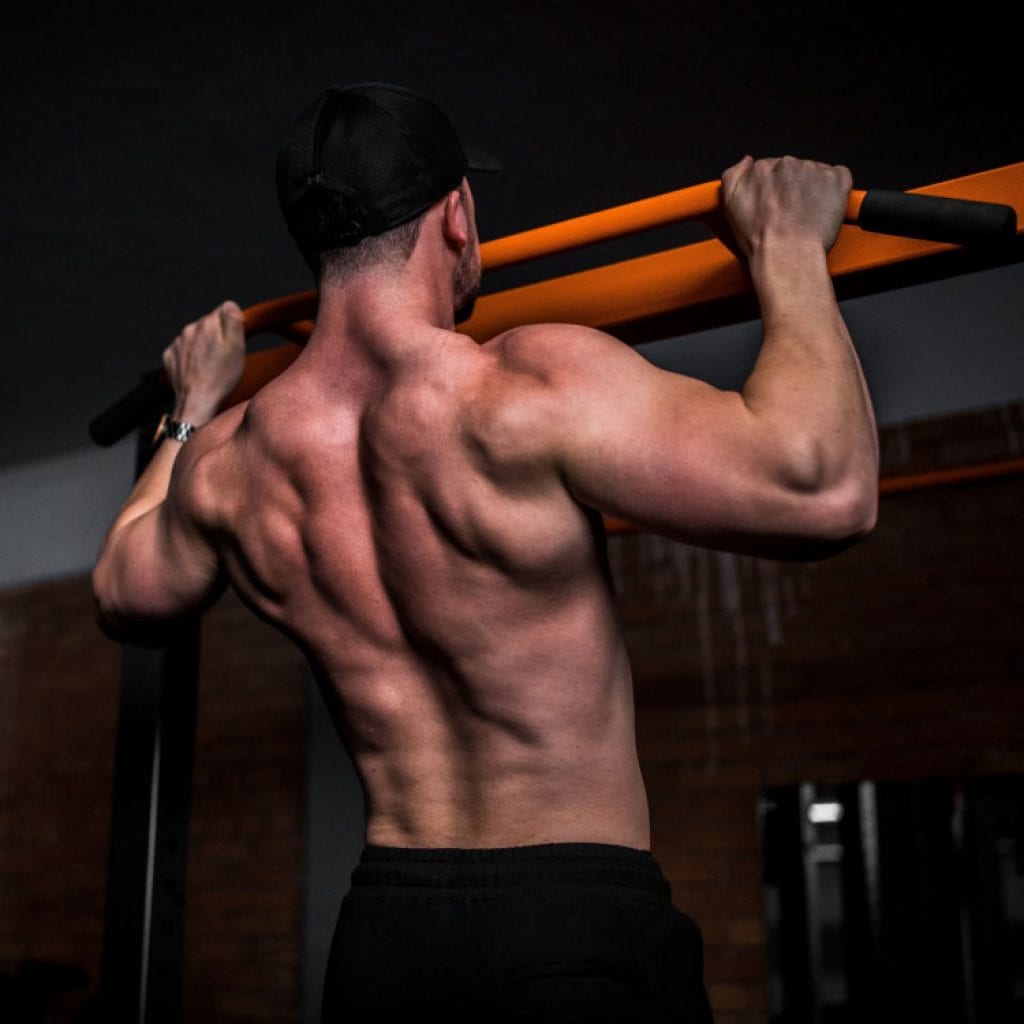
This will lead to greater lat strength and width, giving that v-taper associated with shoulder training, and will provide a firm foundation for building shoulder strength.
To perform pull ups:
- Approach a pull up bar, holding onto it with your hands slightly outside of shoulder width apart, palms facing forwards.
- Retract your scapula, take a deep breath, brace and activate your core and lats.
- From here, pull yourself up until your chest is level with the bar. Pause at the top, then lower down. This is one rep.
Pull ups are hard to perform at first. You could consider working out to them with inverted rows (the same principal, but with your feet on the ground) and assisted pull ups (either with a machine or resistance band).
You can also shift the focus of your pull ups by altering your hand position. For instance, you can bring your hands slightly closer together and face your palms towards you for chin ups. This will place more emphasis into your biceps and posterior deltoids and will put you into a more mechanically secure position, making chin ups more immediately achievable than pull ups.

